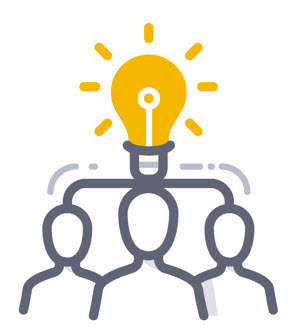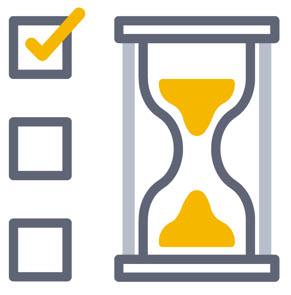The Customer Experience: 14 Ways To Better Understand Your Bank Customer
The reality is that banks don’t think from the customer’s perspective enough. The customer experience is horrible for many bank processes. Bankers often think from the bank’s perspective or from the regulator’s perspective. Not understanding your customer can lead to a brand and products misaligned with the customer’s needs resulting in an erosion of a bank’s competitive position. Below are 14 ways to force bankers to understand customer needs better and help banks do a better job at strategic planning prioritization.
Stop Thinking About the Customer and Think LIKE the Customer
The overarching theme here is to create more employee empathy for the customer. If bankers had to wait weeks for loan approval, struggle to find the loan terms and conditions in documents, deal with fees that are not clearly stated, get charged for RECEIVING wire payments, or deal with problems in their accounts, things would change quickly.
Line employees usually understand the importance of the customer experience, but managers and executives often do not place enough of a priority and devote enough resources to the effort of improving the total experience of the customer. Few banks utilize a customer relationship management system to institutionalize customer knowledge, few banks map customer journeys, and fewer banks have a customer experience officer.
Like everyone is a risk officer in banking, everyone should be trained to be a customer experience officer in banking.
If you have any doubt, ask your management team the following six questions:
- Who are your customers, and who is the ideal customer?
- Who is not your customer?
- What is the bank’s value proposition versus the competition?
- What are the top three complaints from customers?
- How do most new customers find your bank?
- What metrics do you have to measure the customer experience?
Chances are they will maybe get two of the six questions right – if that. As an industry, we have great room for improvement.
Improvement starts with better empathy, and empathy can be turbocharged by “walking a mile in the customer’s shoes.” Below are 14 ways to better understand the customer.
Basic Customer Data Analysis – The Big 4 of Customer Experience
Every bank should train its staff to monitor customer sentiment and performance constantly. It will be important to the organization if it is essential to management. While many banks do some of these basic tactics, it is often not widespread enough and not elevated to the level it needs to be for customer experience improvement.
| Tactic | Examples | ||
|
1 |
 |
Informally Talk to Your Customer | Train employees to continue to ask customers: why they bank with you, what they like/dislike, how the bank can improve, what is their most significant pain point, etc. Capture this information and have employees report on it. In fact, develop a program so that all managers and executives get some customer interaction every 60 days. |
|
2 |
 |
Talk to Your Employees | If you solve employee problems, you solve customer problems since you care about the Total Experience. Ask employees about the most common customer complaints, |
|
3 |
 |
Collect Quantitative Data | Financial performance metrics, Net Promoter Scores, conversion ratio, new customers added, web analytics, call center performance metrics, etc. |
|
4 |
 |
Review Qualitative Data | Customer reviews on Yelp/Google, survey results, chat transcripts, and social media comments. |
Advance Customer Data Collection
| Tactic | Examples | ||
| 5 |  |
Study Customers | In addition to talking to customers, take time to observe them – where they go in the branch, how long their interactions are with bank employees, and why prospects are not converting to customers. Observation can be listening to all calls, watching in a branch, or participating in meetings. |
| 6 |  |
Formally Talk to Customers | Conduct focus groups and customer experience trials. Get direct feedback on bank and product performance and quantitatively track how customers use products such as bill pay or online banking. |
| 7 |  |
Mystery Shop Your Bank | As part of the employee onboarding process, ask them to open an account or try out a service. Have experienced bankers go “undercover” to sign up for new products or go through product training? |
| 8 |  |
Shop the Competition | As part of internal training, send employees regularly to shop and try out banking services from both local direct competitions, fintechs, and online-only banks. Have employees track their customer journey. Create a forum to discuss these experiences. |
Expert Level Customer Experience Data Collection
| Tactic | Examples | ||
| 9 |  |
Co-Design Products With A Customer | Create a hybrid team of employees and customers to develop customer journeys, use cases, and design elements jointly. |
| 10 |  |
Hold Social Events to Allow Customer and Employee Interaction | A bank can hold a “BYOC” (bring your own comments) barbeque as both a customer appreciation event and a way to better collect customer feedback. |
| 11 |  |
Invite Customers to Team Meetings | Invite satisfied, neutral, and dissatisfied customers to speak at small employee meetings. Seek out diverse opinions. |
| 12 |  |
Conduct an Ethnography Study | Have a program where employees can shadow customers as they use mobile, online, or branch products in real-time. Have these employees report back on the experience. |
| 13 |  |
Build a Prototype | Build mock screens, small branches, or experimental technology and then test with actual customers. Observe, record, and report what occurs. |
| 14 |  |
Mandated Customer Experience | Require employees to work in a branch, go on commercial sales calls or take actual calls in the call center. Developers should have to field problem calls about their work, and executives should better understand how their goals and policies impact the customer. |
Putting This into Action
Aside from not getting enough resources, the customer experience often is considered in silos with disconnected objectives. As a result, the bank customer experience is disjointed across the organization. Banks should consider improving the customer experience a strategic priority for 2023 and beyond.
Improving the customer experience starts by setting a CX strategy and then turning that strategy into action within the strategic plan.
When setting a strategy, banks must decide on who their customer is – and what is not. It builds by understanding the personas of your customers and what they are trying to get done during the customer journey. From there, it is all about improving the journey – saving the customer time, better communication, clearer paths on what to do next, and how to quickly resolve problems are usually the biggest categories for any bank process.
If banks can improve the customer experience, even just a little at a time, they will find a myriad of other measures, primarily financial, will improve as well. A bank can never go wrong with better understanding their customer and improving the customer experience. As they say – “A happy customer is the best business strategy a bank can have.”

